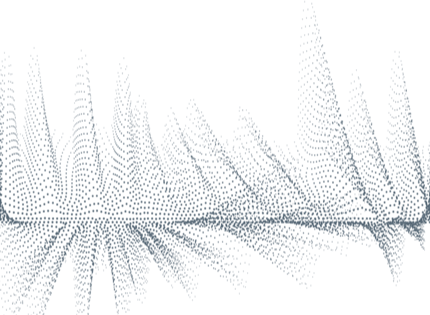A highly configurable wireless platform that meets such requirements and is both affordable and scalable. It is implemented on a single state-of-the-art FPGA board that can be configured from 4x4mm-waveMIMO with 2 GHz channels to 8x8 MIMO with 160 MHz channels in sub-6 GHz bands. Our platform supports mixed configurationswith simultaneous use of mm-wave and sub-6 GHz. Finally, the platform supports real-time operation, e.g., for closed-loop MIMObeam training with low-latency, by implementing suitable hard-ware/software accelerator
Millimeter wave (mm-wave) technology is increasingly being considered for mobile devices and use cases such as vehicular communication. This requires suitable experimentation platforms to support systems-oriented research to tackle the multitude of problems and challenges of (mm-wave) communications in such environments. To this end, we introduce a Millimeter Wave Mobile FulL-Band-width EXperimentation Platform (mm-FLEX).
MISO Project propose a mixed hardware-software design for millimeter wave (mm-wave) experimentation on software-defined radios (SDR). Specifically, the basic blocks required to process the preamble of 802.11ad compliant single carrier frames have been designed allowing mm-wave experimentation with USRP boards at a scaled-down bandwidth, compared to the one defined in the standard (1.76GSPS). The preamble processing blocks have been integrated in the GNU-Radio + RFNoC framework.
This compressed file includes an user manual with the description of the signal processing blocks developed for MISO project implemented using RFNoC framework. Besides, a folder containing the RFNoC source files, FPGA Image with all the implemented blocks, Example of GNURadio source files containing IEEE 802.11ad compliant single carrier frames with different MCS, and Vivado HLS source files for the corresponding blocks are also included.
openLEON is an open source muLti-access Edge cOmputiNg end-to-end emulator that operates from the edge data center to the mobile users. openLEON bridges the functionalities of existing emulators for data centers and mobile networks, i.e., Mininet and srsLTE, and makes it possible to evaluate and validate research ideas on all the components of an end-to-end mobile edge architecture.
Python implementation of the ACO method described in our paper titled “Adaptive Codebook Optimization for Beam Training on Off-the-Shelf IEEE 802.11ad Devices”.
This code allows for the implementation of our method and reproduction of the experiments run for this paper.
Demo: https://joanguitar.github.io/ACO/ (WIP)
Repository: https://github.com/Joanguitar/ACO
Our active measurement dataset, the code for the measurement experiments and the CSP mapping tool are publicly available.
This dataset contains a large number of traces obtained from commercial off-the-shelf 60 GHz devices operating in an indoor environment. Among others, it includes beampattern measurements of electronically steerable phased antenna arrays and extensive coverage measurements. Researchers in the 60 GHz networking community can use our dataset to take into account practical hardware impairments into account. This enables realistic and comparable evaluations of 60 GHz mechanisms
These Matlab scripts implement mm-wave hybrid analog-digital beamforming using the greedy geometric algorithm presented in our paper titled “Speeding Up mmWave Beam Training through Low-Complexity Hybrid Transceivers”, by Joan Palacios, Danilo De Donno, Domenico Giustiniano, and Joerg Widmer, which was recognized with the Best Student Paper Award at the 27th Annual IEEE International Symposium on Personal Indoor and Mobile Radio Communications (PIMRC 2016). The beam patterns (precoders) synthesized using the proposed algorithm are compared against a hybrid beamforming design in the literature based on Orthogonal Matching Pursuit (OMP).
OWL is a software decoder of LTE control channel. It gives access to the main information carried in LTE Dowlink Control Information (DCI) and, in particular, to the modulation and coding scheme (MCS), the assigned resource block number and the transport block size. The software needs a software defined radio to smaple the LTE signal. We successfully tested OWL on different networks (Telefonica, Vodafone, Yoigo and Orange) in Spain and with different radios (Nuand BladeRF and Ettus USRP).
More information can be found in our paper [1] and in the software repository:
[1] Bui, Nicola and Widmer, Joerg (2016) OWL: a Reliable Online Watcher for LTE Control Channel Measurements. In: The 6th Workshop on All Things Cellular: Operations, Applications, and Challenges, in conjunction with the 22nd Annual International Conference on Mobile Computing and Networking (ACM MobiCom 2016), 3-7 October 2016, New York, USA
This Matlab script implements a lightweight, yet effective technique to synthesize sector beam patterns for uniform linear arrays (ULAs). The technique is based on a compact expression to compute the optimal array weights as a function only of the desired beamwidth and steering direction.
Demo: https://joanguitar.github.io/beam-patterns/
Repository: https://github.com/Joanguitar/beam-patterns
We present a model for IEEE 802.11ad implemented in the network simulator ns-3. We model new techniques that are essential for IEEE 802.11ad operation such as beamforming training and steering, relay support, and fast session transfer.
